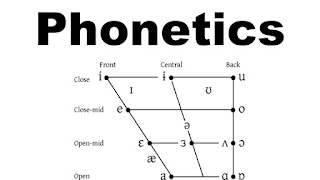Description
of Speech Sound
Trill
A
"trill" in speech sounds is like a quick flutter or vibration of a
certain letter or sound when you talk. It happens when you rapidly repeat a
sound, like when you say "rrrr" in some words. Think of it as a kind
of shaking or trembling of your tongue or lips while making a sound. This can
be found in languages like Spanish or Italian, where the letter "r"
is often pronounced with a trill, making it sound like a rolling "r"
sound. So, a description of a speech sound trill is basically explaining how
this trembling or vibrating sound is made in words.
A
trill is a specific type of speech sound characterized by a rapid and repeated
vibration of a speech organ, typically the tongue or the uvula (the soft,
dangly part at the back of your throat). This vibration produces a distinctive,
fluttering or rolling sound that is often associated with certain languages or
accents.
How a trill works:
Articulation: To
create a trill, you start by narrowing the passage of air in your mouth or
throat. You bring two speech organs very close together without fully blocking
the airflow. Commonly, the tongue is involved in trills, where it is positioned
against a specific point in the mouth, like the alveolar ridge (the bony ridge
behind your upper front teeth) or the uvula. The exact point of contact depends
on the language and the specific sound being produced.
Rapid
Vibration: Instead of holding the speech organ in a fixed position
to produce a steady sound, in a trill, you make it vibrate rapidly by
alternating between contacting and moving away from the contact point. This
quick back-and-forth motion creates a series of very short, repeated sounds.
Auditory
Effect: The result of this rapid vibration is a distinctive
trilling or rolling sound. This sound is often associated with certain letters
or phonemes in various languages. For example, in Spanish, the letter
"r" is often pronounced as a trill, creating the famous rolling
"rr" sound in words like "perro" (dog).
Phonetic
Symbol: Linguists represent trill sounds in the International
Phonetic Alphabet (IPA) using the symbol [r]. Other notations can be used
depending on the language and the specific trill sound being described.
Variation:
Trills can vary in intensity and duration. Some languages may have a single,
quick trill, while others may feature a longer or more pronounced trill. The
specific characteristics of a trill can vary from one language or dialect to
another.
In
summary, a "description of speech sound - trill" refers to the way a
trill sound is produced in speech, involving the rapid vibration of a speech
organ to create a fluttering or rolling sound. This phenomenon is found in many
languages and can be associated with specific letters or sounds, adding a
distinctive flavor to pronunciation and accent.
Examples
Spanish: The
Spanish letter "r" is often pronounced as a trill, especially when it
appears at the beginning of a word or after another consonant. For example, in
the word "perro" (dog), the double "r" is pronounced with a
trill, creating the rolling "rr" sound.
Italian:
Italian also features trill sounds, especially in words like
"ragazzo" (boy), where the "r" is pronounced with a trill
similar to the Spanish "rr."
Russian:
Russian has a trill sound represented by the letter "р" (pronounced
as "r" in the Latin alphabet). For example, in the word
"река" (river), the "p" is pronounced with a trill.
Scottish
English: In some Scottish accents, the "r" sound is
pronounced as a trill, making words like "bird" sound more like
"birrd."
Arabic:
Arabic features a variety of trill sounds, represented by letters like "ر"
(pronounced as "r" in the Latin alphabet) and "غ"
(pronounced as a throaty trill). For example, the word "رمضان"
(Ramadan) has a trilled "r."
Swedish: In
some Swedish dialects, the letter "r" is pronounced as a trill,
similar to the Spanish "rr." For instance, the word "röd"
(red) can be pronounced with a trill.
Tibetan:
Tibetan language includes trill sounds, and they are represented by letters
like "ར" (pronounced as "r" in the
Tibetan script). For example, "རྒྱལ"
(rgyal) means "king" and has a trill sound.
These
examples illustrate how trill sounds can vary across languages and accents,
adding distinctiveness to speech and pronunciation. The specific pronunciation
and intensity of the trill can also vary within a language or dialect.
In
English, trill sounds are relatively rare compared to languages like Spanish or
Italian. However, there are a few instances where trill-like sounds occur,
often influenced by regional accents or speech patterns. Here are a couple of
examples:
Scottish
English: In some Scottish accents, the "r" sound is
pronounced with a trill, especially in rural or traditional dialects. For
instance, the word "bird" might be pronounced more like
"birrd."
Caribbean
English: In certain Caribbean accents, particularly in Jamaica,
the "r" sound is pronounced as a trill or tap in some words. For
example, the word "water" might be pronounced as "wattah."
It's
important to note that trill sounds are not a standard feature of English
pronunciation and are mainly found in specific regional dialects or accents.
Most varieties of English, including American, British, and Australian English,
do not use trills in the same way as languages like Spanish or Italian.










0 Comments